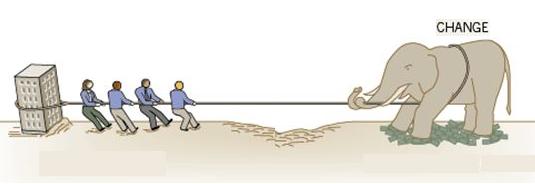In the previous post, we deal with the various sources of resistance to change. In this post we discusses strategies and tactics to overcome resistance to organizational change.
Kotter and Schelsinger (1979) has identified six general strategies for overcoming resistance to change.
- Education and Communication : Resistance can be reduced through communicating with employees to help them see the logic of a change. This tactic basically assumes that the source of resistance lies in misinformation or poor communication. If employees receive the full facts and get any misunderstanding cleared up, resistance will subside. Communication can be achieved through one-to-one discussions, memos, group presentations, or reports.



